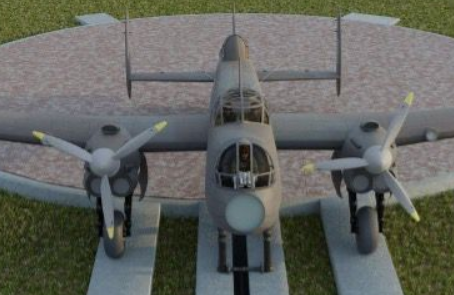Royal Aircraft Establishment Mark III Catapult
In a recent excavation at the Harwell Science and Innovation Campus in Oxfordshire, a remarkable piece of history was unearthed – the Royal Aircraft Establishment Mark III Catapult. This innovative prototype, constructed between 1938 and 1940 during the site’s tenure as RAF Harwell, was designed with a unique purpose in mind: to launch World War Two bomber planes into the sky, revolutionizing take-off procedures and offering a crucial advantage during wartime.
A Solution for Shorter Runway Take-offs
The primary objective of this catapult was to enable shorter runway take-offs, allowing planes to carry more fuel. This was a game-changing advantage during World War Two. The project aimed to address the pressing need for more efficient aircraft takeoff solutions. However, despite its ambitious intentions, the catapult project was abandoned without ever successfully launching an aircraft.
Challenges and Abandonment
The Royal Aircraft Establishment Mark III Catapult faced significant challenges. The engines proved to be prone to rapid wear, and the design didn’t adequately accommodate the bomber planes. Consequently, the mechanism was dismantled, and a conventional runway was constructed in its place.
Historical Significance
This discovery is even more remarkable because it served as a precursor to Catapult Armed Merchant (CAM) ships, which played a pivotal role in launching Hawker Hurricanes at sea via rocket-propelled catapults during World War Two.
Innovative Design
The catapult’s design was a fascinating innovation of its time. It featured a large rotating turntable that directed aircraft toward one of two concrete runways, each measuring just 82 meters (269 feet) in length. The aircraft was attached to an underground pneumatic ram, powered by Rolls-Royce Kestrel aero engines that compressed air to an astonishing 2,000 psi. This force propelled the aircraft along the guided track, launching them into the sky.
Preserving History Through Technology
Archaeologists at the Museum of London Archaeology (MOLA) have contributed to preserving this historical find by creating a 3D digital replica of the catapult. While the physical catapult has been dismantled to make way for ongoing construction, its remains are being archived for historical documentation. The excavation also uncovered other relics of the past, such as large lights from another nearby runway and a Spigot Mortar-type gun emplacement that was once used for defense against potential attacks.
A Glimpse into the Past
The discovery of the Royal Aircraft Establishment Mark III Catapult sheds light on the relentless innovation and experimentation that characterized the pre-World War Two and wartime eras. It offers a fascinating glimpse into the history of technology and warfare, showcasing the ambitious spirit of those who sought innovative solutions during a critical period in history.
Month: Current Affairs - October, 2023
Category: International / World Current Affairs








